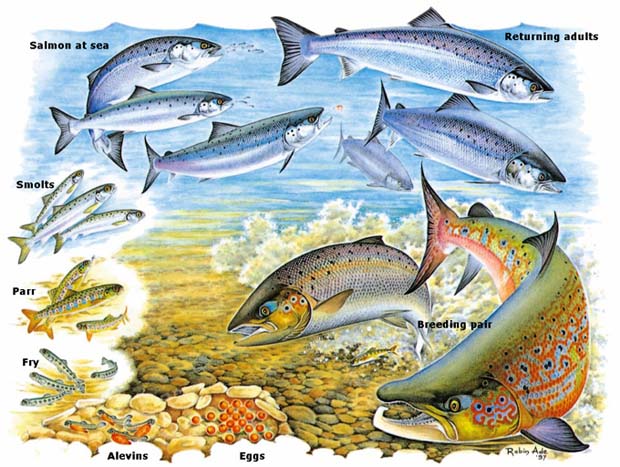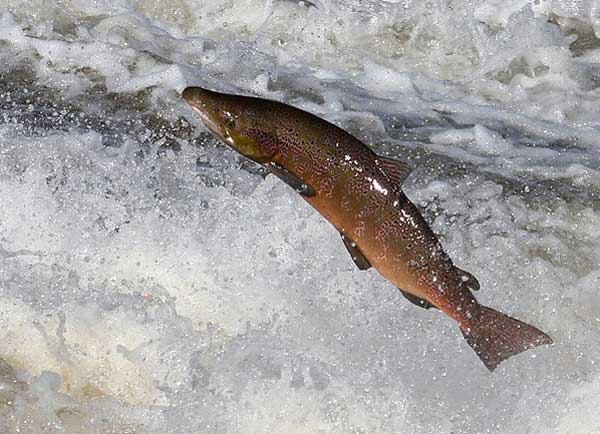Species in the Spotlight: Gulf of Maine Atlantic Salmon
[dropcap]A[/dropcap]tlantic salmon (Salmo salar), also known as the “King of Fish,” were once found in North American waters from Long Island Sound in the United States to Ungava Bay in Northeastern Canada. Dams, pollution, and overfishing led to significant declines in wild Atlantic salmon abundance in the late 1800s and early 1900s. Today, the last remaining wild populations of Atlantic salmon in U.S. waters exist in just a few rivers and streams in central and eastern Maine. These populations constitute the Gulf of Maine Distinct Population Segment (DPS) of Atlantic salmon that is listed as endangered under the Endangered Species Act.

Illustration Courtesy of the Atlantic Salmon Trust and Robin Ade. North American Salmon Conservation Organization.
Wild Atlantic salmon populations were once abundant in the United States as far south as the Housatonic River in Connecticut. Atlantic salmon were an important food source that was highly sought after by Native American tribes in the Northeast and American colonists up until the late 1800s. In the late 1800s, Maine’s Fisheries Commissioner, Charles Atkins, suggested that based on the number of weirs and the average daily yield described by fishermen, Atlantic salmon annual harvests in the Kennebec River alone may have once exceeded 200,000 fish.
Find out more about their status, life history, threats, regulations, population trends, conservation efforts, and critical habitat.








